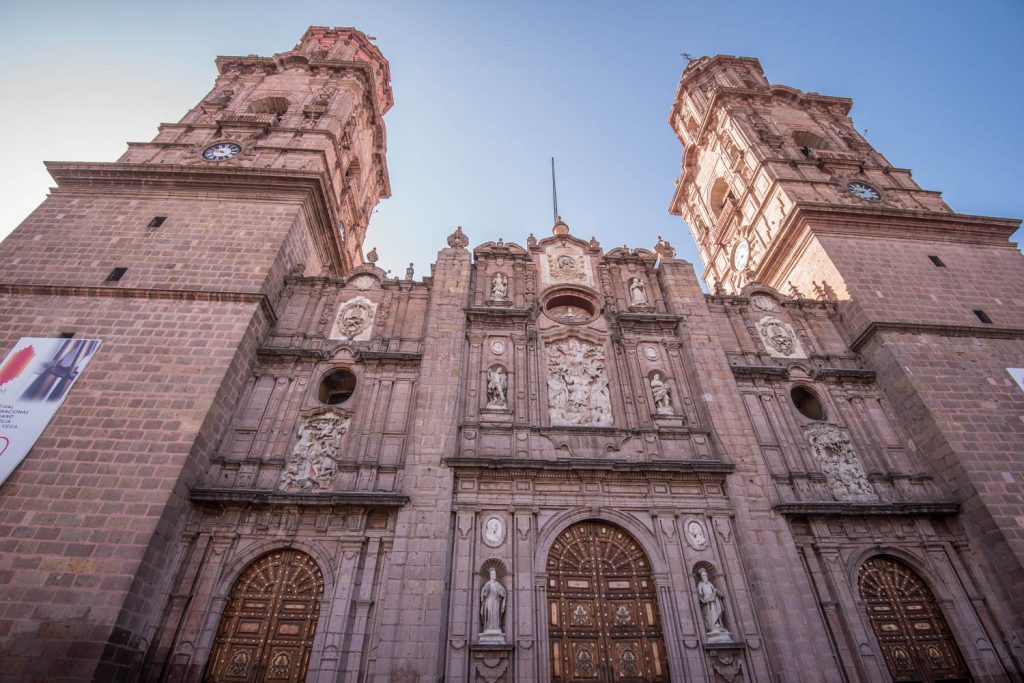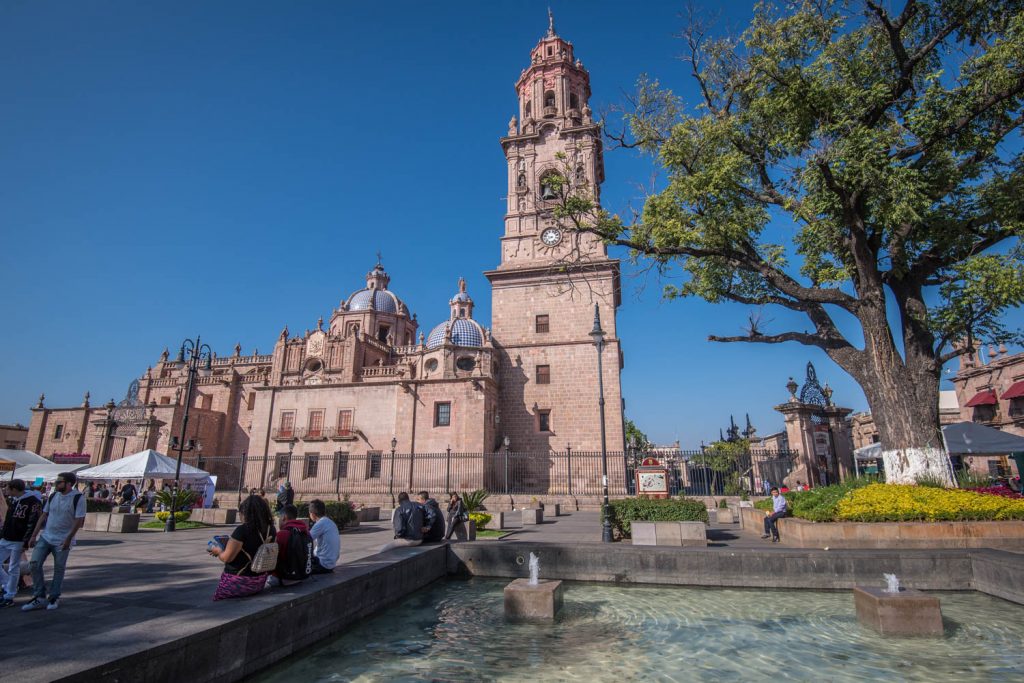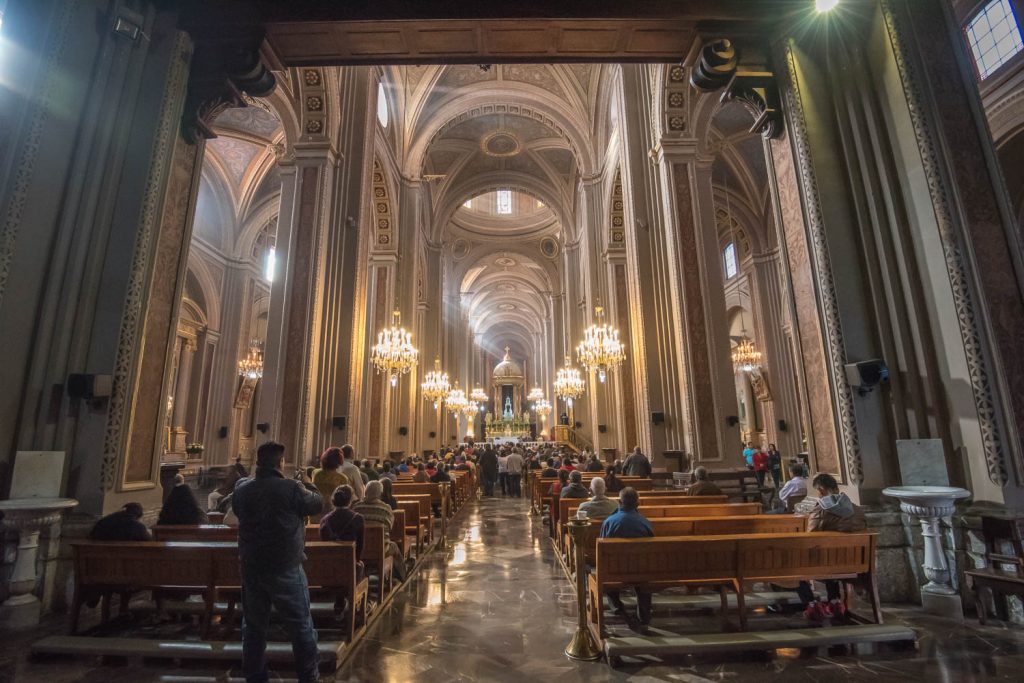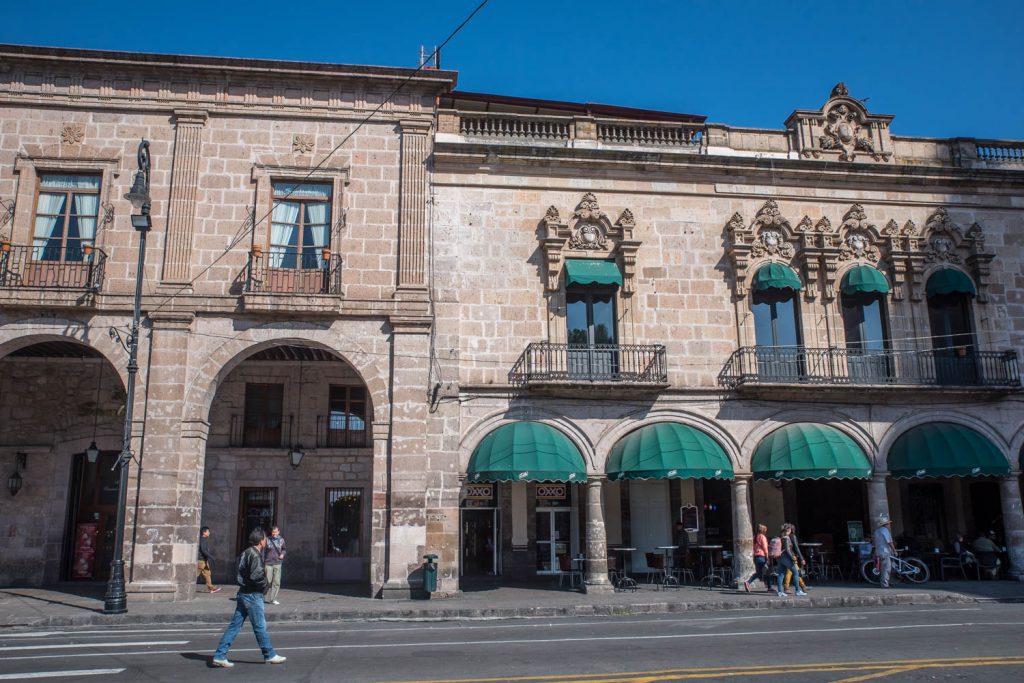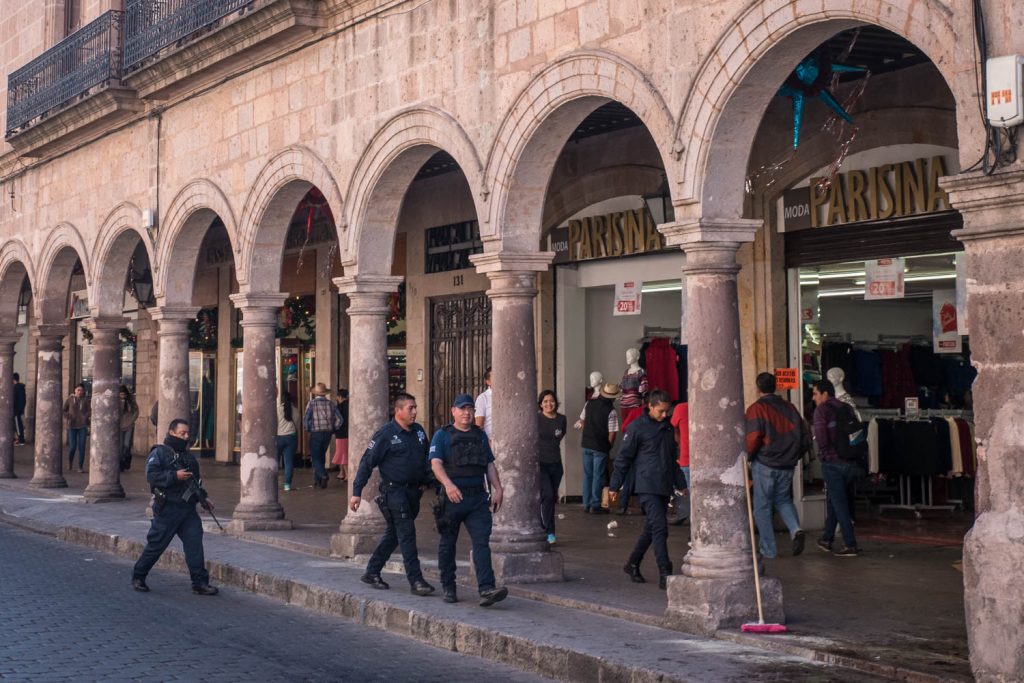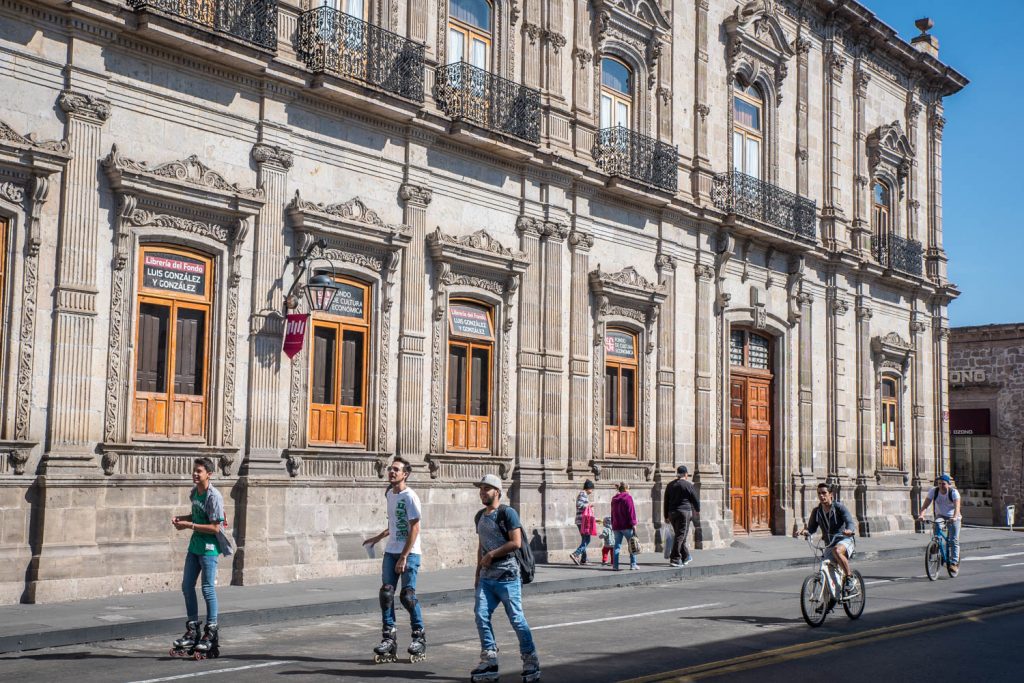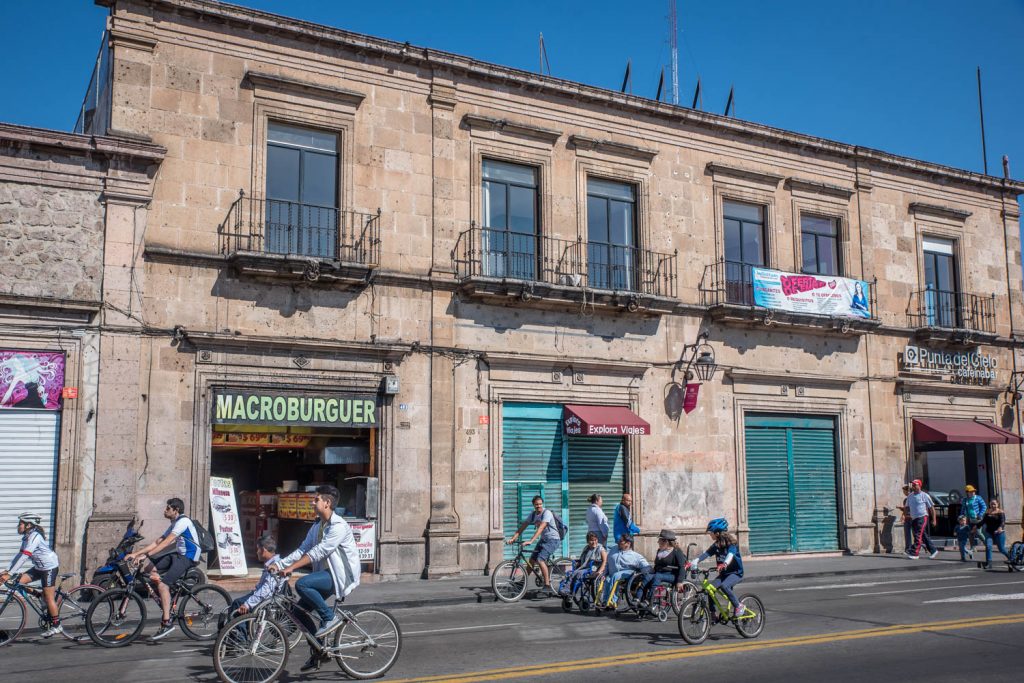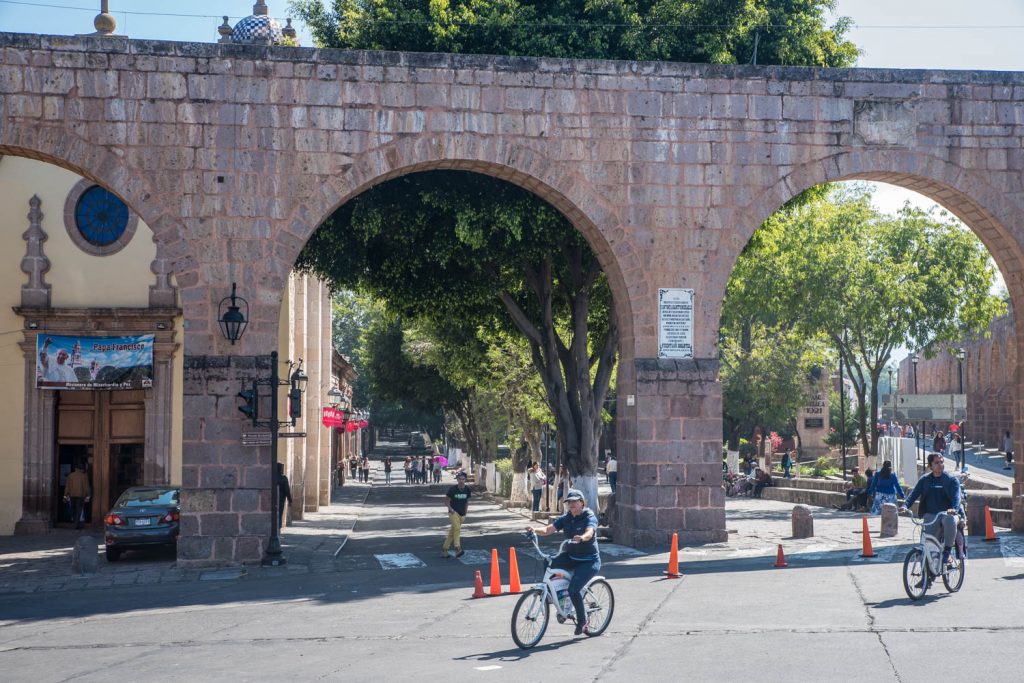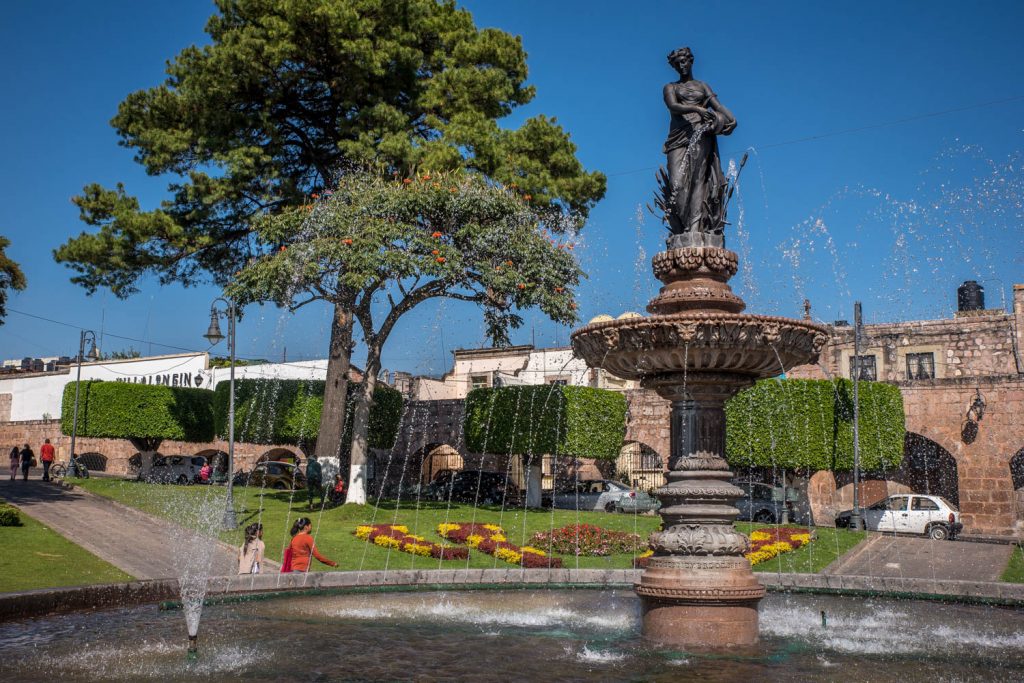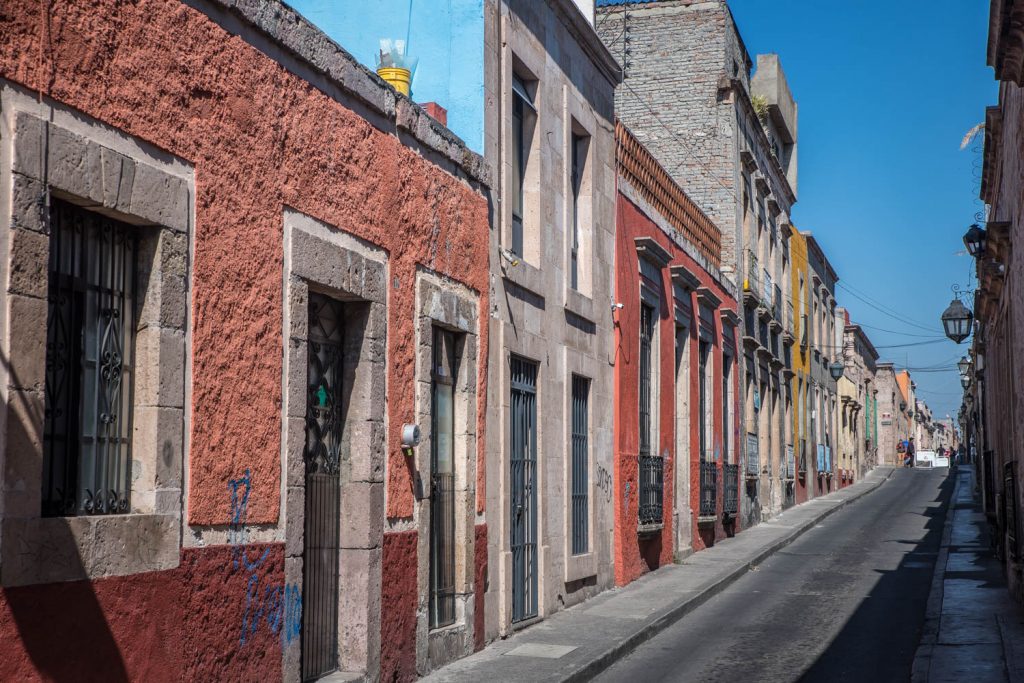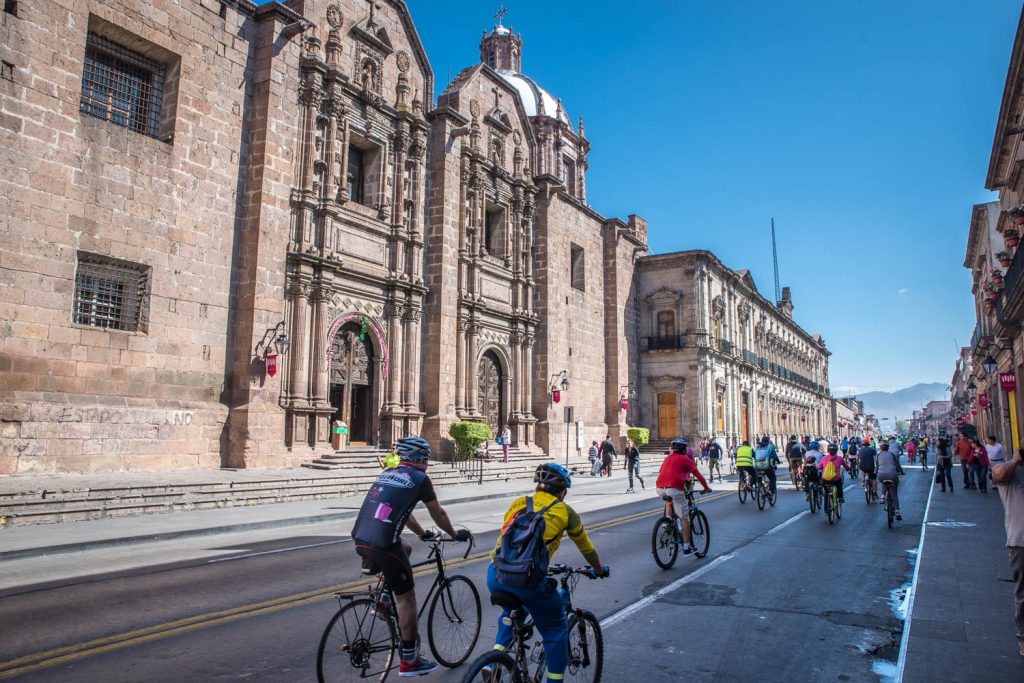
I only had a few hours to explore the historic centre of Morelia on Sunday.
Morelia is the capital of the state of Michoacán and it’s now a city of close to one million people. But its historic centre displays a strong Spanish influence with decorative buildings of stone.
In fact, before the city was renamed to honour independence leader Jose Maria Morelos, it was named Valladolid after the Spanish city.
I left early from Patzcuaro and got a bus to Morelia, leaving too early to find any breakfast places open. So, I ended up eating breakfast on the main square of Morelia at outdoors under one of the portales or colonnades.
After, I explored on foot, popping my head into the impressive cathedral, where a Sunday service was taking place.
The main street in the historic centre was closed to vehicle traffic so it could be used solely by cyclists and rollerbladers. I gather this takes place every Sunday.
I’ve seen other cities in Canada do this, but never on such an impressive street.
My flight to Tijuana didn’t leave until 4 p.m., but I returned to the bus depot, where I’d left my baggage, in good time to catch another taxi to the airport.
The driver who took me from downtown to the bus depot was interested in hearing what I had to say about Donald Trump. I assured him I was not from the United States, and that Canadians would have solidly voted against him if he were running in our country. (I didn’t tell him that a recent poll showed a majority of Albertans actually would support Trump).
Needless to say, the driver was solidly opposed to Trump, as are many Mexicans who have ever worked in the U.S. or have family there.
The plane was full for the three-and-a-half-hour flight to Tijuana and as so often occurs there were screeching babies strategically placed around the cabin for in-flight entertainment. Have I mentioned I hate planes?
My driver from the airport to my hotel in Tijuana was one of only about four Mexicans I’ve met this trip who spoke English well enough to converse in it.
He was also not impressed by Trump. He had worked in San Diego and two of his children were born in the United States, giving them U.S. citizenship.
I’m staying at Hotel Caesar’s, which is said to be where Caesar’s salad was invented. Only the façade hints at its history as a place where the rich and famous stayed in the mid-20th century when Tijuana was a destination for sin.
It’s right on Avenida de la Revolucion, or La Revo as it’s known, which is where all the loud bars and such are located. The area actually seemed surprisingly tame from how I remembered it many years ago, and there was heavy police presence.
I’m very disappointed that I haven’t yet seen any donkeys painted with stripes to look like zebras, as Tijuana is known for.
Today I’ll cross the border at the pedestrian crossing to San Ysidro. I fly from San Diego to Vancouver via Los Angeles later this afternoon, arriving late tonight.
